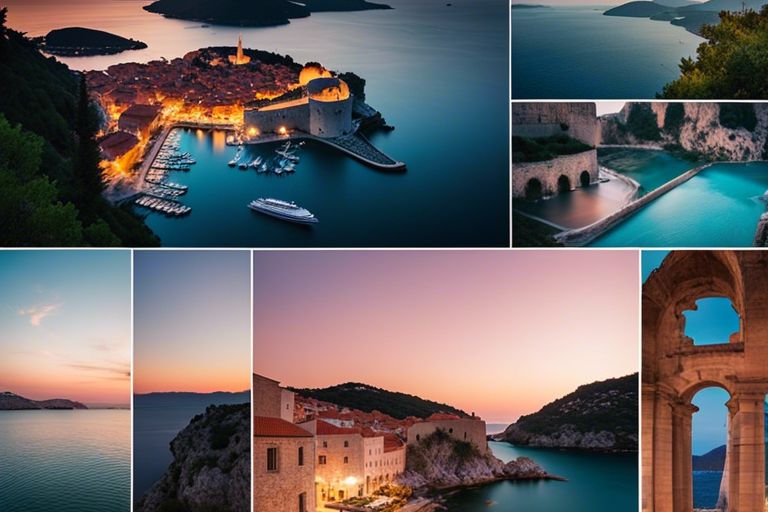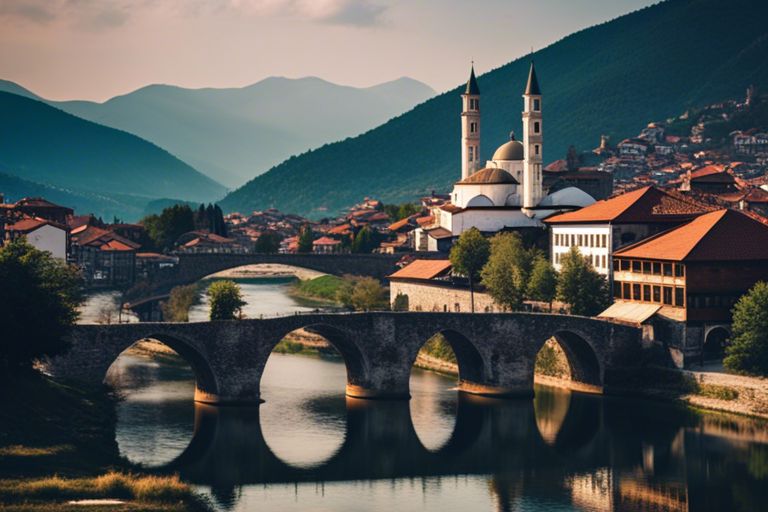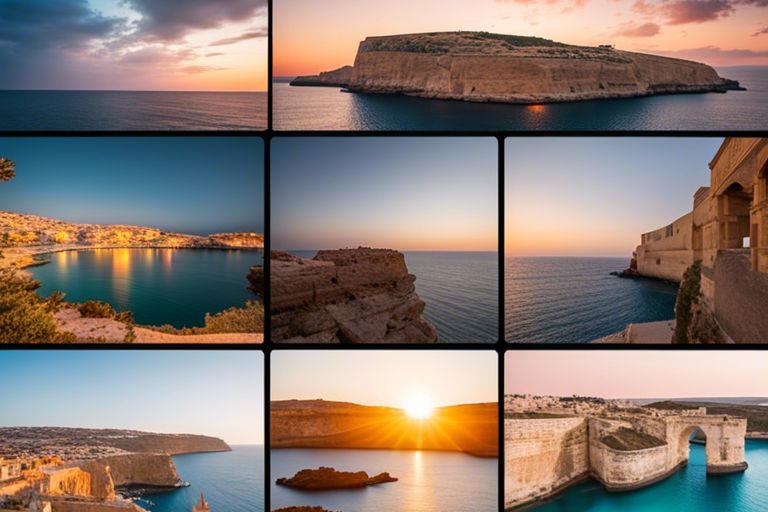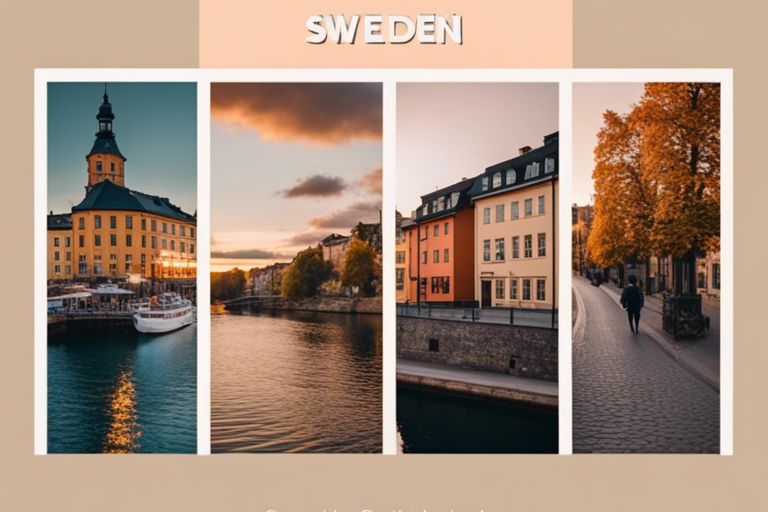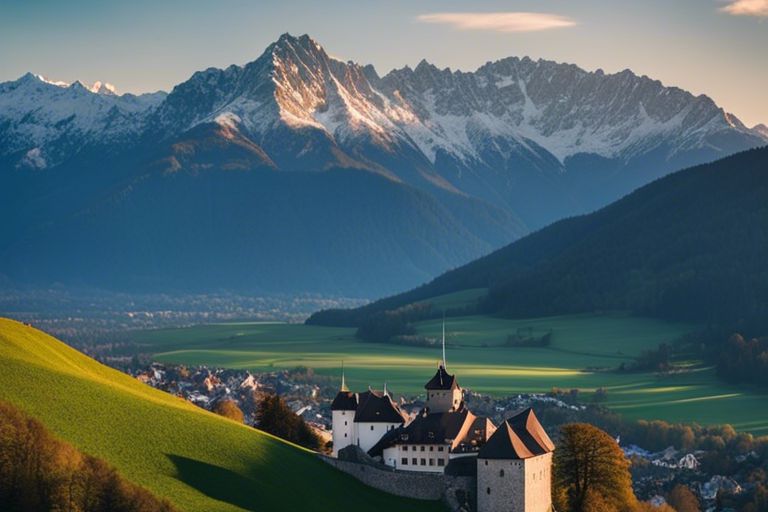As I sit here, reflecting on my travels through Croatia, I’m reminded of the sheer diversity and beauty of this incredible country. From the stunning Adriatic coastline to the picturesque medieval towns and vibrant cities, Croatia has something for everyone. But with so many amazing places to visit, it can be overwhelming to plan your trip. That’s why I’ve put together this guide to the best places to visit in Croatia – to help you make the most of your time in this incredible country. Whether you’re looking for hidden gems, popular attractions, or a mix of both, I’ve got you covered. So, grab a coffee, get comfortable, and let’s look into the best places to visit in Croatia!
Key Takeaways:
- Best Time to Visit Croatia: Late spring or early autumn (April-May or September-October) is recommended for pleasant weather, fewer tourists, and lower prices.
- Minimum Days Needed: 7-10 days is the minimum amount of time needed to explore Croatia, allowing you to visit Zagreb and spend time on the coast or focus on a single region like Dalmatia.
- Getting Around: Renting a car is recommended to get the most out of your time in Croatia, but public transportation options like buses and ferries are also available, and booking tickets directly with the service provider is suggested.
Best Time to Visit Croatia
While Croatia has become a popular destination year-round, the best time to visit depends on your preferences and what you want to do. As a local, I’ve experienced the country in all seasons, and I’m happy to share my insights to help you plan your trip.
Late Spring or Early Autumn: The Ideal Time
Croatia’s late spring and early autumn periods offer the perfect blend of pleasant weather, fewer tourists, and lower prices. From April to May and September to October, you can enjoy mild temperatures, ideal for swimming, hiking, and exploring the country’s beautiful landscapes.
Visiting in Summer: Pros and Cons
Any time of year has its advantages and disadvantages, and summer is no exception. Here’s a breakdown of what to expect:
| Pros | Cons |
|---|---|
| Warm weather and long days | Crowds and long lines at popular attractions |
| Beach activities and water sports | Higher prices for accommodations and tourist services |
| Festivals and events like Ultra Europe and Dubrovnik Summer Festival | Hot and humid weather, especially in July and August |
| More ferry connections and tourist infrastructure | Limited availability for accommodations and popular activities |
For instance, if you’re looking for a vibrant atmosphere and don’t mind the crowds, summer might be the perfect time for you. However, if you prefer milder weather and smaller crowds, consider visiting during the shoulder season.
Winter: A Quiet and Authentic Experience
Ideal for those seeking a peaceful and authentic experience, winter in Croatia offers a unique charm. You’ll find fewer tourists, lower prices, and a chance to explore the country’s cultural and historical heritage without the crowds.
Visit Zagreb, the capital city, and enjoy its festive atmosphere during the winter months. The city’s Christmas markets and holiday festivities are a must-see, and you’ll have a chance to experience the local culture without the summer chaos.
How Long to Spend in Croatia
Clearly, Croatia is a country that has a lot to offer, and it’s not surprising that most visitors come for 1-2 weeks. However, it would be just as easy to spend three, or four, or eight weeks here! With so many potential places to visit and countless outdoor activities to partake in, choosing what to do and where to go can be outright overwhelming, especially for a first visit.
Minimum Time Required: 7-10 Days
Long story short, 7-10 days is the minimum amount of time needed to explore Croatia at all. Anything less would be far too rushed, and you wouldn’t be able to see much at all. With 7-10 days, you could visit Zagreb and spend some time on the coast. Alternatively, you could pick a single region, such as the Northern Adriatic (Kvarner and Istria) or Dalmatia, and spend all of your time there.
Planning Your Itinerary: Tips and Tricks
Tricks of the trade: when planning your itinerary, remember to prioritize and don’t try to do too much. You can always come back and see the rest of the country on another visit! Here are some tips to get you started:
- Focus on one or two regions to avoid excessive travel time.
- Plan your itinerary according to the time of year and weather conditions.
- Consider visiting during the shoulder season (spring or fall) for better prices and smaller crowds.
- Don’t forget to leave some room for spontaneity and flexibility in your plans.
Plus, remember that it’s not just about seeing all the sights; it’s also about experiencing the local culture, trying new foods, and taking in the breathtaking scenery. So, take your time, and don’t rush through your trip. Any good itinerary should include a mix of relaxation, exploration, and adventure.
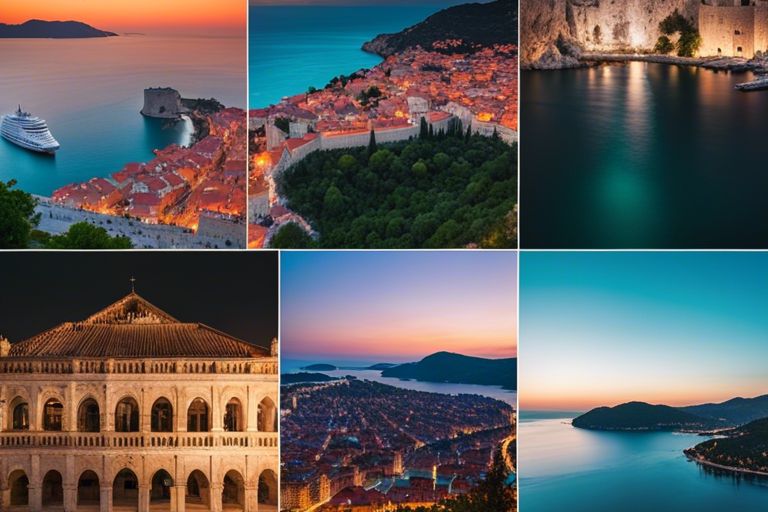
Costs in Croatia
Unlike other Eastern European countries, Croatia has become a popular tourist destination, and its prices have risen accordingly. As I explored the country, I realized that it’s vital to have a clear understanding of the costs involved to plan your trip effectively. What are some good places to visit in Croatia? How does it compare to other similar countries like Slovenia or Serbia?
The Eurozone Effect: Prices on the Rise
Costs in Croatia have increased significantly since the country joined the Eurozone in 2023. This change has brought prices more in line with those found in Italy, Spain, or Greece. While it’s still possible to find affordable options, especially during the off-season, it’s vital to budget accordingly to ensure a comfortable trip.
Budgeting for Your Trip: Tips and Estimates
To help you plan your trip, here are some rough estimates of what you might expect to pay in Croatia:
- Accommodation: €30-€60 per night for a budget-friendly option, €80-€120 per night for mid-range, and €200-€300 per night for luxury.
- Food: €10-€20 for a meal at a mid-range restaurant, €5-€10 for a meal at a budget-friendly eatery, and €20-€50 for a fine dining experience.
- Transportation: €20-€50 for a bus ticket, €50-€100 for a ferry ride, and €40-€100 per day for car rental.
Assume that these prices will be higher during peak season (June to September) and lower during the off-season.
Tips for saving money in Croatia include considering accommodation options outside of popular areas, eating at local markets or preparing your own meals, and opting for public transportation instead of renting a car. Additionally, look for package deals or discounts on activities and attractions to help stretch your budget further.
- Book your accommodation and transportation in advance to secure the best prices.
- Research local festivals and events, which can impact prices and availability.
- Consider visiting during the shoulder season (April to May or September to October) for better deals and smaller crowds.
By being mindful of these costs and budgeting accordingly, you can ensure a comfortable and enjoyable trip to Croatia.
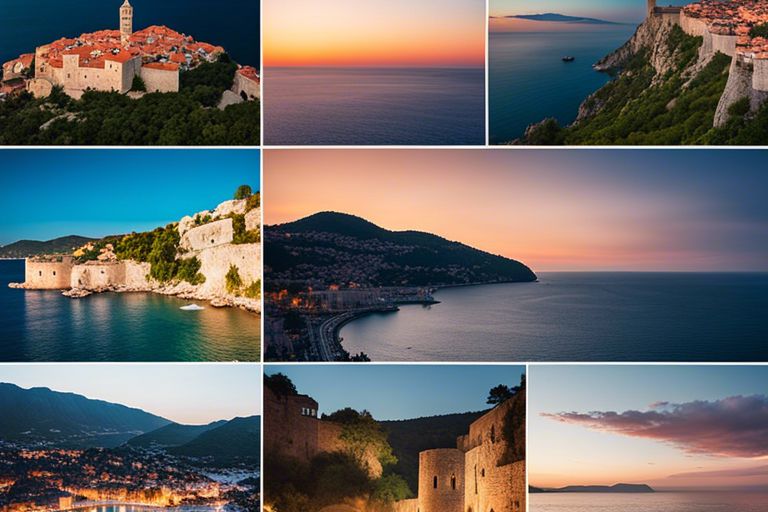
Transportation and Getting Around
After deciding on your itinerary, the next step is to figure out how to get around Croatia. With its unique geography, getting from one place to another can be a bit challenging, but don’t worry, I’ve got you covered.
Renting a Car: The Best Way to Explore
On the road, you’ll have the freedom to create your own schedule and explore Croatia’s hidden gems. Renting a car is the best way to get around, especially if you want to visit the national parks, small towns, and beaches that are off the beaten path.
International Flights: Connections and Options
Options abound when it comes to flying into Croatia. With excellent air connections to most major European capitals, you can easily find a flight that suits your needs. Low-cost carriers operate dozens of routes, primarily between Western and Northern European cities.
Another advantage is that Croatia has several international airports, including Zagreb, Split, Dubrovnik, Zadar, Pula, and Rijeka, making it easy to find a flight that lands close to your desired destination.
International Train and Bus: Alternative Routes
To travel by land, Croatia is connected by train and bus to Austria, Hungary, Slovenia, Italy, Serbia, Bosnia and Herzegovina, and Germany. This is a great option if you’re coming from a neighboring country or want to explore multiple destinations in one trip.
The train and bus networks are extensive, but schedules can be limited for certain routes, so be sure to check ahead and plan accordingly.
Domestic Bus: A Convenient and Affordable Option
Internationally, Croatia has a comprehensive public bus system that connects most major destinations and many smaller ones as well. This is a convenient and affordable way to get around, especially if you’re on a budget.
Renting a bus or taking a private transfer is also an option, but the public bus system is a great way to meet locals and experience the authentic Croatian culture.
Domestic Rail: Limited but Scenic Routes
Flights are not the only way to see Croatia’s stunning landscapes. While the domestic rail network is limited, it’s a great way to take in the scenic views of the countryside. The national rail carrier, Hrvatske željeznice (HZ), operates most routes.
Affordable and relatively comfortable, the train is a good option for shorter journeys or if you want to avoid driving.
Ferries: Island Hopping Made Easy
Domestic ferries are the lifeblood of Croatia’s island communities. If you’ll be spending any time in the islands during your visit, you’ll need to rely on ferries to get between them and to/from the mainland.
Island hopping has never been easier, with multiple ferry companies operating routes to various islands. Jadrolinija is the largest ferry company, but there are others to choose from depending on your route.
Where to Base Yourself
Keep in mind that Croatia is a relatively small country, but its geography can make it difficult to get around. To make the most of your trip, it’s vital to choose the right base for your travels.
Zagreb: The Capital City
Captivating Zagreb, with its Austro-Hungarian charm, is an excellent choice for those interested in history, culture, and urban exploration. As the capital city, it’s well-connected to the rest of the country, making it an ideal base for day trips to nearby attractions like Plitvice Lakes National Park or the charming hilltop town of Samobor.
Coastal Towns: Split, Dubrovnik, and More
One of the most popular ways to experience Croatia is by basing yourself in one of its stunning coastal towns. Split, Dubrovnik, and Rovinj are just a few of the many options, each offering a unique blend of history, culture, and beach relaxation. From these towns, you can easily explore the surrounding islands, national parks, and ancient ruins.
With a coastal town as your base, you’ll have access to a wide range of activities, from sailing and snorkeling to hiking and cultural exploration. Plus, the scenic coastal roads and frequent ferry connections make it easy to explore the surrounding area.
Islands: A Peaceful Retreat
With over 1,000 islands to choose from, Croatia’s island archipelago offers a tranquil retreat from the mainland’s bustle. Islands like Hvar, Brač, and Korčula are popular choices, with their picturesque villages, secluded beaches, and lush green landscapes. It’s the perfect setting to unwind and recharge.
It’s worth noting that island-hopping can be a bit more challenging than exploring the mainland, but the scenery and relaxed atmosphere make it well worth the effort. Just be sure to plan ahead, as ferry schedules and accommodations can fill up quickly during peak season.
20 Best Places to Visit in Croatia
Not surprisingly, Croatia has become one of the most popular destinations in Europe, attracting over 15 million visitors every year. With its stunning coastline, beautiful islands, historic cities, and pristine nature, it’s no wonder why. If you’re planning a trip to Croatia, you might want to check out this list of 10 Best Places to Visit in Croatia, but if you want the insider’s scoop, keep reading!
I’ve compiled a list of 20 fantastic places to visit in Croatia, including some must-visit destinations, hidden gems, and local favorites. Whether you’re interested in history, nature, food, or simply soaking up the sun, there’s something for everyone in this incredible country.
Historic Cities: Dubrovnik, Split, and More
Split apart from the rest, Croatia’s historic cities are a treasure trove of architecture, culture, and history. From the ancient Roman palace in Split to the medieval walls of Dubrovnik, each city has its own unique charm and character.
Islands: Hvar, Brač, and Korčula
On the crystal-clear waters of the Adriatic Sea, Croatia’s islands are a haven for relaxation and adventure. With their picturesque villages, secluded beaches, and lush green landscapes, Hvar, Brač, and Korčula are just a few of the many islands waiting to be explored.
Croatia’s islands are a world of their own, where time stands still and the pace of life is slow and easy. Whether you’re looking for a romantic getaway or an action-packed adventure, the islands have something for everyone.
National Parks: Plitvice Lakes and Krka
Cities may have their charm, but Croatia’s national parks are a nature lover’s paradise. With their turquoise lakes, waterfalls, and lush vegetation, Plitvice Lakes and Krka National Parks are a must-visit for anyone who loves the great outdoors.
The beauty of Croatia’s national parks is simply breathtaking. From the serene lakes of Plitvice to the rugged waterfalls of Krka, these parks are a testament to the country’s incredible natural diversity.
Coastal Towns: Rovinj, Poreč, and More
More than just a pretty face, Croatia’s coastal towns are a treasure trove of history, culture, and natural beauty. From the charming old town of Rovinj to the Roman ruins of Poreč, each town has its own unique character and charm.
A stroll along the waterfront, a visit to a local market, or a simple coffee in a quaint café – Croatia’s coastal towns are all about soaking up the atmosphere and enjoying the simple things in life.
Hidden Gems: Local Favorites and Secrets
Split from the crowds, Croatia’s hidden gems are waiting to be discovered. From the scenic hills of Istria to the secluded beaches of the Pelješac Peninsula, these local favorites and secrets are off the beaten path, but definitely worth a visit.
It’s not always easy to find the hidden gems, but that’s what makes them so special. With a little insider knowledge and a sense of adventure, you can discover the real Croatia, beyond the tourist traps and crowded hotspots.
Local Help with Your Planning
Despite the wealth of information available online, planning a trip to Croatia can still be overwhelming, especially for a first-time visitor. With so many potential places to visit and countless outdoor activities to partake in, choosing what to do and where to go can be outright overwhelming.
One-on-One Consultations: Get Expert Advice
One way to get personalized help with your planning is to schedule a Croatia travel consultation with me! These are one-hour Zoom calls where we can chat about the trip you’re planning, and I’ll share my tips and advice, answer your travel questions, and help you perfect your itinerary.
Online Resources: Guides, Itineraries, and More
Itineraries, guides, and travel tips are just a click away! For more ideas on travel in Croatia, check out our 10-day Croatia itinerary and this guide to 19 stunning Croatian islands. You can also explore our collection of Croatia guides and itineraries, covering topics like the Dalmatian Coast, Istria, and where to eat in Dubrovnik, Split, and Zagreb.
This wealth of online resources is designed to help you make the most of your trip to Croatia. From planning your daily activities to finding the best restaurants and hidden gems, our guides and itineraries are packed with insider knowledge and practical advice. Whether you’re looking for inspiration or just want to get a better sense of what to expect, our online resources are here to help.
Guide to the Dalmatian Coast
For many visitors, the Dalmatian Coast is the epitome of Croatia’s beauty, with its crystal-clear waters, ancient cities, and picturesque islands. As I explore this stunning region, I’m constantly reminded of its rich history, vibrant culture, and breathtaking natural beauty.
History and Culture
On the Dalmatian Coast, history and culture are woven into the very fabric of daily life. From the ancient Romans to the Venetian Republic, this region has been shaped by a multitude of civilizations, each leaving their mark on the architecture, art, and traditions of the area. As I wander through the narrow streets of Split or Dubrovnik, I’m struck by the sheer weight of history that surrounds me.
Beaches and Islands
An idyllic haven of turquoise waters, secluded coves, and sun-kissed beaches, the Dalmatian Coast is a beach lover’s paradise. With over 1,000 islands and islets to explore, you’ll find your own private slice of heaven. From the iconic Zlatni Rat beach in Brač to the tranquil Hvar Island, each destination offers a unique blend of relaxation and adventure.
This stunning coastline is dotted with charming fishing villages, medieval towns, and secluded bays, making it perfect for island-hopping, snorkeling, or simply soaking up the sun. As I explore the islands, I’m constantly discovering hidden gems, from secluded beaches to ancient ruins, that make this region so special.
Food and Wine
An integral part of Dalmatian culture, food and wine play a starring role in the region’s identity. With its Mediterranean climate, the Dalmatian Coast is renowned for its fresh seafood, locally grown produce, and exceptional wines. From traditional peka dishes to fresh seafood risottos, every meal is a culinary journey through the region’s rich heritage.
Plus, with its long history of winemaking, the Dalmatian Coast is home to some of Croatia’s finest wines, including the famous Pošip and Debit varieties. As I sip a glass of crisp white wine overlooking the Adriatic Sea, I’m reminded of the simple pleasures in life that make this region so special.
Guide to Istria
Many travelers flock to Istria, a charming region in northwest Croatia, known for its rolling hills, picturesque hilltop towns, and delicious cuisine. As I explored this beautiful region, I discovered a treasure trove of experiences that will make your trip to Croatia truly unforgettable.
For more inspiration on planning your trip to Croatia, check out Top Places To Visit in CROATIA in 2024.
Hilltop Towns and Villages
For a glimpse into Istria’s rich history, visit the hilltop towns and villages that dot the region. Perched atop hills, these medieval towns offer breathtaking views of the surrounding countryside. Wander through the narrow streets, explore ancient churches, and soak up the laid-back atmosphere.
Cuisine and Wine
With its rich soil and mild climate, Istria is a foodie’s paradise. Savor the region’s famous truffles, indulge in delicious pasta dishes, and sample some of the best olive oil in the world. And don’t forget to pair your meals with a glass of Istrian wine, renowned for its rich flavors and aromas.
Villages like Motovun and Grožnjan are particularly famous for their gastronomic delights, where you can taste traditional Istrian dishes like fuži (a type of pasta) and peka (a slow-cooked meat or vegetable dish).
Outdoor Activities
Istria is a nature lover’s dream, with its lush forests, sparkling rivers, and rolling hills. Go hiking, biking, or horseback riding through the countryside, or explore the region’s many parks and nature reserves. For a unique experience, take a hot air balloon ride over the Istrian landscape.
Wine enthusiasts will love exploring the region’s many vineyards and wine cellars, where you can sample some of the best wines in Croatia. And if you’re feeling adventurous, take a truffle-hunting tour and discover the secrets of Istria’s famous fungi.
Where to Eat in Dubrovnik
All travelers to Dubrovnik know that the city’s stunning architecture and breathtaking views are only half the story – the other half is the delicious food and drink that awaits you!
Seafood Restaurants
Ranging from rustic eateries to upscale establishments, Dubrovnik’s seafood restaurants serve the freshest catches of the day, often accompanied by a side of locally-grown vegetables and a glass of crisp white wine. Be sure to try the classic Dalmatian dish, peka, a slow-cooked seafood or meat stew.
Traditional Cuisine
Traditional Dubrovnik cuisine is a reflection of the city’s rich history and cultural heritage. Expect hearty meat dishes, stews, and soups, often flavored with aromatic herbs and spices. To truly experience the local flavors, head to family-run taverns and konobas, where you’ll find authentic, homemade specialties.
To examine deeper into Dubrovnik’s culinary traditions, visit the local markets, where you can sample artisanal cheeses, cured meats, and freshly baked bread. Don’t miss the opportunity to try some of the region’s renowned wines, such as Malvazija and Pošip.
Cafes and Bars
For a break from sightseeing, Dubrovnik’s charming cafes and bars offer the perfect refuge. Enjoy a strong coffee or a refreshing cocktail at a scenic spot, like the old town’s main street, Stradun, or the picturesque harbor. Be sure to try some of the local pastries and cakes, like rožata, a creamy custard dessert.
Seafood lovers, rejoice! Dubrovnik’s cafes and bars often serve fresh seafood snacks, like grilled squid or mussels, accompanied by a cold beer or a glass of wine. As the sun sets, find a spot to watch the city come alive, and indulge in some people-watching while savoring your drink.
Best Restaurants in Split
Your culinary adventure in Split is about to begin! As a local, I’m excited to share my favorite restaurants in Split, where you can indulge in delicious seafood, meat, and vegetarian options, as well as sweet treats.
Seafood and Fish
Finest seafood aficionados will love Konoba Marjan, a cozy restaurant located near the Green Market. Their menu boasts an impressive selection of fresh seafood, including fish, shellfish, and crustaceans, all expertly prepared to bring out the natural flavors.
Meat and Vegetarian Options
Savor the rich flavors of Dalmatian cuisine at Villa Spiza, a charming restaurant tucked away in a quiet alley. Their menu features an array of meat and vegetarian dishes, including traditional peka (a slow-cooked meat or vegetable dish) and mouthwatering platters of grilled meats.
Fish-lovers will also appreciate Villa Spiza’s seafood options, which are just as impressive as their meat dishes. Be sure to try their signature dish, octopus peka, which is slow-cooked to perfection.
Desserts and Cafes
Fancy a sweet treat? Head to Café Bar Opera, a stylish spot in the heart of Split’s old town. Their decadent desserts, including creamy cakes and rich chocolates, are the perfect way to cap off your meal.
To experience the authentic Split atmosphere, grab a coffee or dessert at Café Bar Luxor, a local favorite situated on the picturesque Riva waterfront. Enjoy the stunning views of the Adriatic Sea while indulging in their delicious pastries and cakes.
Dining in Zagreb
Once again, I found myself indulging in the rich flavors of Croatian cuisine, and Zagreb did not disappoint. The capital city offers a diverse dining scene that showcases traditional Croatian dishes, international flavors, and cozy cafes and bars.
Traditional Croatian Cuisine
One of the best ways to experience Croatian culture is through its food, and Zagreb’s traditional restaurants serve up hearty dishes that will leave you wanting more. Be sure to try classic Croatian staples like peka (a slow-cooked meat or vegetable dish), paprikaš (a spicy beef stew), and fuži (homemade pasta with truffles). These dishes are often served with a side of crusty bread and a glass of wine, making for a satisfying and filling meal.
International Flavors
Dining in Zagreb isn’t just about traditional Croatian cuisine; the city also offers a range of international flavors to suit every taste. From Italian to Asian fusion, you’ll find restaurants serving up dishes that blend local ingredients with global inspiration.
Flavors from around the world come together in Zagreb’s international restaurants, where you can savor everything from sushi to curry. The city’s culinary scene is constantly evolving, with new restaurants and cafes popping up all the time. Whether you’re in the mood for something familiar or adventurous, Zagreb’s international flavors have got you covered.
Cafes and Bars
Traditional cafes and bars are an integral part of Zagreb’s social scene, and you’ll find plenty of cozy spots to grab a coffee or cocktail. From historic cafes like Café Europa to trendy bars like Botaničar, there’s a spot to suit every style.
Understanding the local cafe culture is key to experiencing Zagreb like a local. Take a seat at a sidewalk cafe, order a coffee or beer, and watch the world go by. It’s the perfect way to slow down and soak up the city’s atmosphere.
To wrap up
Hence, I hope this insider’s guide has helped you navigate the best places to visit in Croatia, a country that has stolen my heart. With its stunning coastline, picturesque islands, and rich history, Croatia is a destination that has something for everyone. From the bustling streets of Dubrovnik to the tranquil beauty of Plitvice Lakes National Park, I’m confident that you’ll fall in love with this incredible country just as I have. Happy travels, and I look forward to hearing about your Croatian adventures!
Here are three FAQs about the best places to visit in Croatia:
FAQ
Q: What is the best time to visit Croatia?
A: The best time to visit Croatia is in late spring (April-May) or early autumn (September-October). These periods offer mild and pleasant weather, fewer tourists, and lower prices. Summer is the most popular time to visit, but it can be hot and crowded, while winter is cold and not ideal for visiting the coast or islands.
Q: How many days do I need to explore Croatia?
A: It’s recommended to spend at least 7-10 days in Croatia to explore the country at a comfortable pace. With this amount of time, you can visit Zagreb and the coast, or focus on a single region like Dalmatia or Istria. Trying to do too much in a short amount of time can be rushed and stressful, so it’s better to prioritize and plan your itinerary carefully.
Q: How do I get around Croatia?
A: Renting a car is the best way to get around Croatia, especially if you want to explore the countryside, national parks, and hidden beaches. You can also use public transportation like buses and trains, but the network is limited and schedules can be infrequent. Ferries are necessary for visiting the islands, and you can book tickets directly with the service providers or through online platforms like DiscoverCars and RentalCars.

